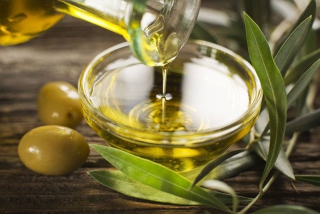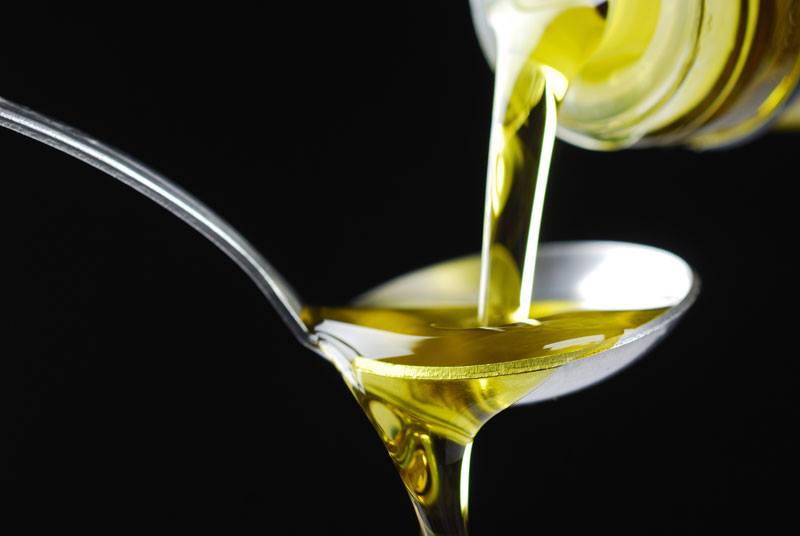
Cooking with Olive Oil
10 January 2017Discover the three types of olive oils while learning smoke points, storing information and the good news about olive oils health benefits.
By North American Olive Association
Types and Usage
Three types of olive oil are available in North America:
- Extra virgin olive oil
- Olive oil
- Light-tasting olive oil
(The main difference in the three types is the amount of flavor.)
Extra virgin olive oil
Extra virgin olive oil is the most flavorful olive oil, with an unlimited range of flavors spanning from smooth and subtle to peppery and pungent.
Uses: Drizzled straight out of the bottle to finish dishes, for dressings and marinades and for grilling. A finishing drizzle of extra virgin olive oil can enhance the texture, taste and aroma of food. To help select which extra virgin olive oil is best for a dish, consider complementary flavors. More intense tasting olive oils pair well with stronger ingredients, such as red meat and hearty grains; subtle, fruitier oils pair well with delicate foods, such as white fish and crisp vegetables.
 Olive oil
Olive oil
Olive oil, sometimes referred to as “classic” or “pure” olive oil, has a milder flavor with just a hint of fruitiness.
Uses: Olive oil is a perfect everyday cooking oil and easily adapts to a number of cooking methods such as grilling, sautéing, roasting, frying and baking. The subtle flavor of olive oil provides a good base for spice-infused dressings and hearty sauces and won’t alter the intended flavor.
Light-tasting olive oil
Light-tasting olive oil is almost flavorless, bringing the benefits of olive oil to recipes without influencing the overall taste.
Uses: Just like olive oil, light-tasting olive oil can be used for a wide variety of cooking methods, from grilling to baking. It’s the perfect choice when looking for an oil that won’t alter the flavor of a dish. When used in baking, either as an alternative to other oils or as a substitute for margarine or butter, olive oil produces light, moist baked goods that stay fresh longer.
Helpful Information for Cooking With Olive Oil
Substituting Olive Oil for Butter and Margarine
To substitute olive oil for butter or margarine in any recipe, follow this conversion chart.
| Butter/Margarine | Olive Oil |
| 1 teaspoon | 3/4 teaspoon |
| 1 Tablespoon | 2 1/4 teaspoons |
| 2 Tablespoons | 1 1/2 Tablespoons |
| 1/4 cup | 3 Tablespoons |
| 1/3 cup | 1/4 cup |
| 1/2 cup | 1/4 cup + 2 Tablespoons |
| 2/3 cup | 1/2 cup |
| 3/4 cup | 1/2 cup + 1 Tablespoon |
| 1 cup | 3/4 cup |
Cooking Oil Production and Smoke Points
Olive oil is one of the few popular cooking oils produced through natural extraction vs. chemical extraction. When cooking with oils and fats, each reacts to heat differently. The hotter they get, the more they break down and start to smoke. Oils and fats have different smoke points. When referring to the chart below, keep in mind that the average stovetop cooking temperature is 350°F.
| Product | Smoke Point | Production Method |
| Extra Virgin Olive Oil | 320–375°F | Naturally extracted with no heat or chemicals |
| Olive Oil | 391–468°F | Blend of refined olive oil and virgin/extra virgin olive oil; no solvents used |
| Canola Oil | 425–475°F | Refined; solvent extracted |
| Corn Oil | 450°F | Refined; solvent extracted |
| Soybean Oil | 460°F | Refined; solvent extracted |
| Butter | 250–300°F | Churning of cream |
| Margarine | 360°F | Oil is chemically treated and then hydrogenated before being combined with other ingredients and agitated |
Storing Olive Oil
In order to keep olive oil at its best, it is very important to handle and store it properly. Even a fantastic olive oil will go bad when it is mishandled. The three key enemies of olive oil are heat, light and air. Limit exposure to all three and olive oil can keep well for up to two years in the original sealed package. Once opened, it should be used within two to three months.
Keep the cap securely closed when not in use. Leave a pour spout on the bottle if the opening can’t be sealed. Allowing continuous exposure to air will promote oxidation that leads to rancid oil.
| Do | Don’t |
| Store olive oil in a cool, dark place, such as a cupboard or pantry. | Store olive oil next to or above the stove where heat will affect even a dark bottle or tin. Also note that the top of the fridge is not a good storage place because it is often warm from the components working to keep the inside cool. |
| Use small decanters or containers for tabletop use, rather than a large container or bottle. | Store pretty bottles of olive oil permanently on the table or on the kitchen windowsill. |
| Keep the cap securely closed when not in use. | Leave a pour spout on the bottle if the opening can’t be sealed. |
Olive Oil Health and Nutrition Information
The beneficial role of olive oil in a healthy diet has been proven time and again in studies around the globe and science related to olive oil’s health benefits continues to evolve. The most important aspect of using olive oil for health purposes is to remember that it should replace sources of saturated fat in a diet. In addition, the acclaimed Mediterranean Diet, of which olive oil is a key component, is based on balanced proportions and relies heavily on consumption of vegetables and fruits, nuts, and lean proteins such as chicken and fish. Coincidentally, these all taste better when prepared with olive oil!
Olive oil is a more healthful choice than many other cooking fats due to the fact that it is a monounsaturated, or “good,” fat. Consuming monounsaturated fat in place of saturated fat has been shown to help lower the bad LDL cholesterol and raise the good HDL cholesterol. The FDA agrees and approved a qualified heart health claim for olive oil in 2004.
Extra virgin or virgin olive oils offer additional health benefits because they are naturally extracted and retain an abundance of vitamins and polyphenols that have antioxidant, anti-inflammatory and antimicrobial properties. A recent study from Spain found that participants with the highest olive oil consumption as a proportion of total calories had a 26-percent-lower mortality rate from all causes and were 44 percent less likely to die from heart disease.
A diet with olive oil as a main source of fat has been linked to health benefits related to cardiovascular disease, diabetes, stroke, cancer and more. There is also evidence that olive oil helps the body better absorb beneficial nutrients from vegetables and other healthy ingredients in meals.
References:Harvard School of Public Health; The Culinary Institute of America (1996). The New Professional Chef, 6th edition, John Wiley & Sons; www.canolainfo.org; www.madehow.com, http://en.wikipedia.org/wiki/Smoke_point and http://nutrition.about.com/od/ahealthykitchen/f/ hexane.htm.Buckland G. Am J Clin Nutr, 2012. 96(1):142–9.Mitrou PN. Arch Intern Med. 2007; 167(22):2461-2468. Shellen R. Goltz, Wayne W. Campbell, Chureeporn Chitchumroonchokchai, Mark L. Failla, Mario G. Ferruzzi. Meal triacylglycerol profile modulates postprandial absorption of carotenoids in humans. Molecular Nutrition & Food Research, 2012; 56 (6): 866 DOI: 10.1002/mnfr.201100687. Photos courtesy of North American Olive Association.
